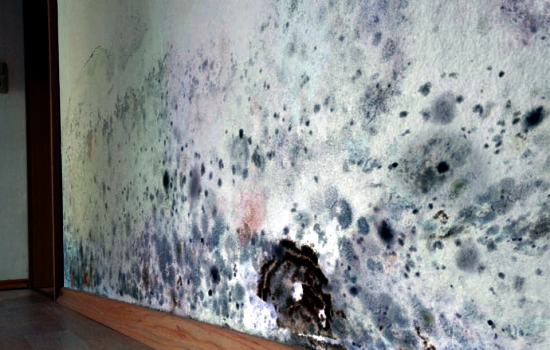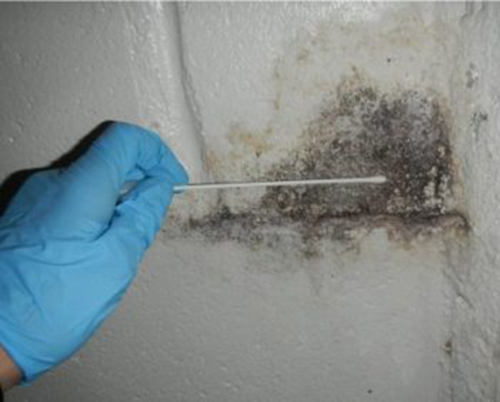Support on What to Do After Mold Remediation
Wiki Article
Key Steps for Successful Message Mold Remediation
Addressing mold and mildew concerns in a timely and efficient manner is crucial for maintaining a healthy and balanced interior setting. Successfully completing mold remediation is a multifaceted procedure that calls for interest to detail and adherence to details procedures. From evaluating treated locations to applying dampness control steps, each step plays an essential function in guaranteeing the efficiency of the remediation process. Nevertheless, there are essential post-remediation actions that are just as crucial but frequently overlooked. These actions not just confirm the success of the removal initiatives however likewise add to stopping future mold and mildew development.Evaluation of Treated Locations
Upon conclusion of the mold remediation procedure, an extensive examination of the treated areas is important to make sure the performance of the remediation efforts. This assessment works as a crucial action in the post-remediation stage to validate that the mold and mildew elimination and cleaning treatments achieved success in getting rid of the mold invasion and recovering a secure indoor environment. The evaluation must be performed by certified specialists that have the proficiency to evaluate the remediated areas thoroughly.Throughout the examination, numerous factors are evaluated to determine the success of the remediation process. These include visual assessments to check for any signs of mold growth or water damages, dampness degrees to validate that the location is complimentary and completely dry of excess humidity that could promote mold re-growth, and air top quality screening to make certain that the interior air is secure to take a breath. In addition, the inspection may involve utilizing specialized devices such as wetness meters and thermal imaging cams to identify concealed mold and mildew or dampness pockets that could lead to future mold and mildew issues if left unchecked. Overall, a thorough evaluation of the treated locations is critical to verify the efficiency of the mold removal efforts and offer comfort to the passengers of the property.

Wetness Control Measures
Efficient wetness control steps are important for preventing mold development and keeping a healthy and balanced indoor environment. Additionally, making use of dehumidifiers in moist areas can help reduce humidity degrees, making it harder for mold and mildew to flourish.Regularly evaluating and preserving the building's outside can likewise avoid dampness invasion. Post remediation mold testing near me. Ensuring that seamless gutters are clear, downspouts straight water away from the structure, and the roofing system remains in good problem can help stop water from seeping into the structure. Correctly securing doors and windows can additionally help maintain moisture out
In situations where water damages occurs, timely activity is necessary. Any type of spills or leaks must be cleansed and dried within 24-48 hours to avoid mold and mildew growth. Utilizing dampness meters can aid find surprise sources of water and make sure detailed drying. By executing these dampness control measures, the risk of mold repeating can be significantly decreased, producing a much healthier interior setting.
Proper Ventilation Assessment
An essential element of making sure a healthy and balanced indoor atmosphere message mold remediation is conducting a comprehensive assessment of the ventilation system. Post Mold Remediation. Correct air flow evaluation plays an important function in preventing future mold and mildew development and preserving air quality within the damaged room. During the assessment, official website specialists examine the effectiveness of the ventilation system, examining for any type of obstructions, leaks, or breakdowns that could hinder proper air flow. It is important to make certain that the air flow system is appropriately sized for the area it offers which it meets industry requirements for air exchange rates.Moreover, examining the ventilation system includes checking out the distribution of air throughout the location to recognize any locations of inadequate circulation where wetness and impurities remove mold clothing could collect. Correct ventilation not only aids in regulating humidity levels however additionally aids in eliminating air-borne mold and mildew spores and various other pollutants, consequently boosting overall indoor air high quality. By attending to any kind of ventilation issues publish mold removal, homeowner can produce a much healthier and extra comfortable environment for residents while minimizing the danger of mold and mildew re-infestation.
Cleansing and Sanitation Protocols
To make certain comprehensive mold remediation, meticulous adherence to certain cleansing and disinfection protocols is critical. Cleaning up and sanitation procedures play an essential role in the post-mold removal stage to stop the reoccurrence of mold growth and make sure a secure and healthy and balanced atmosphere. The initial step in this process is the elimination of any kind of noticeable mold growth using appropriate cleaner and methods. It is necessary to utilize EPA-approved fungicides and disinfectants to efficiently eliminate mold and mildew spores and avoid their regrowth.After the preliminary cleansing, complete disinfection of the influenced areas is necessary to eliminate any continuing to be mold spores and hinder their proliferation. This action is important in preventing the spread of mold and mildew to other parts of the residential or commercial property. In addition, executing safety nets such as using mold preventions and maintaining appropriate air flow can help lessen the risk of future mold problems. By following stringent cleansing and disinfection procedures, homeowner can ensure the successful elimination of mold and produce a healthy and balanced interior atmosphere for residents.
Monitoring and Maintenance Plan
Executing a routine tracking and maintenance plan is necessary for making certain the lasting performance of mold and mildew removal initiatives. As soon as mold and mildew removal is finished, it is vital to develop a surveillance timetable to examine the success of the removal process. This includes on a regular basis checking the formerly impacted areas for any signs of mold reappearance or water damages. By conducting routine checks, any new mold development can be immediately recognized and addressed, stopping a reoccurrence of the initial issue.In addition, establishing a maintenance strategy is essential to stop future mold and mildew issues. This strategy may consist of actions such as dealing with plumbing leakages, enhancing air flow, and controlling indoor moisture levels. Normal maintenance not only assists in avoiding mold but likewise adds to preserving a healthy indoor setting. It is a good idea to record all monitoring and upkeep tasks to track progress and make sure consistency in the upkeep of the remediated locations. By applying a thorough surveillance and maintenance strategy, the threat of mold re-emergence can be dramatically minimized, advertising a clean and secure living or working atmosphere.
Final Thought
Finally, effective post mold remediation includes comprehensive evaluation of treated locations, application of wetness control measures, analysis of correct air flow, adherence to cleaning and article disinfection procedures, and facility of a surveillance and upkeep strategy. These crucial steps are important to make sure that mold development is efficiently gotten rid of and avoided from recurring in the future. By adhering to these guidelines, homeowner can maintain a safe and healthy and balanced environment for passengers.Upon completion of the mold and mildew remediation process, a comprehensive inspection of the dealt with areas is vital to guarantee the efficiency of the removal initiatives. These consist of aesthetic analyses to examine for any type of indications of mold development or water damage, dampness levels to confirm that the area is dry and complimentary of excess moisture that could promote mold re-growth, and air quality testing to ensure that the indoor air is safe to take a breath. In addition, the evaluation might entail making use of specialized devices such as dampness meters and thermal imaging electronic cameras to identify covert mold and mildew or dampness pockets that could lead to future mold and mildew problems if left unattended. By attending to any ventilation issues upload mold removal, building proprietors can create a much healthier and a lot more comfortable setting for passengers while reducing the risk of mold re-infestation.

Report this wiki page